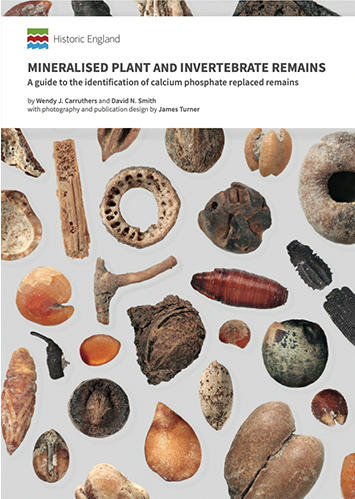Mineralised plant and invertebrate remains
a guide to the identification of calcium phosphate replaced remains
28.10.2021
The aim of this photographic guide is to assist archaeobotanists and archaeoentomologists in the identification of mineralised biological remains that are of archaeological significance. In this publication the term ‘mineralised’ refers to the replacement of biological tissues with calcium phosphate and does not include items preserved by metal corrosion products. Mineralised remains can be difficult to identify because phosphatic mineralisation primarily preserves soft tissues. For fruits and seeds this often results in the loss of diagnostic features of the thickened, protective outer layers (pericarps and seed coats). For insect remains this primarily results in the preservation of fly (Diptera) pupae and puparia which are less familiar to many archaeoentomologists since they mainly study beetles (Coleoptera) preserved by waterlogging. Insects, fruits and seeds can also be preserved as internal casts which are often difficult to identify due to the lack of features.
